SPL Phonitor XE Review - Features vs Sound Quality
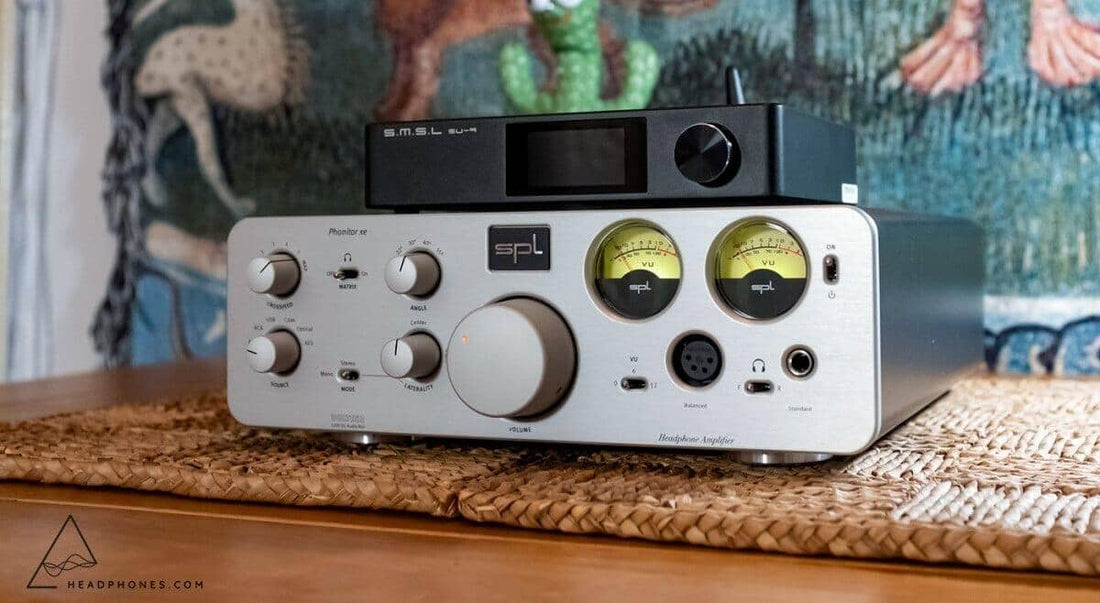
Review written by Jake Cheriff
Introduction
The Phonitor XE is a headphone amp from a well respected brand in the Pro Audio world with some interesting features that I’ve been looking forward to testing out since I initially fell down the headphones rabbithole in early 2020. I was particularly excited to see how the “Matrix” feature would work for mixing and mastering in the studio. More on this later.
My only previous experience with SPL as a company is via their digital audio software plugins, many of which I use on a regular basis in the studio. Their plugins emulate SPL’s “mastering grade” hardware units (compressors, saturators, transient designers etc). I can’t comment on whether the plugins hold a candle to their physical outboard units, but I am a big fan of the way the plugins sound and function in isolation. I find the Phonitor XE , like SPL’s software, to be immaculate in terms of both sound and function.
Features
Phonitor Matrix
The “Phonitor Matrix” was disappointing for both post production work and general listening. SPL claims on their website that the Matrix feature allows the listener to
“...listen to music through headphones as if you were listening through speakers. The tiring super stereo effect is a thing of the past. Enjoy your music exactly the way it should be heard.”
As a producer, didn't find this to be the case. The Matrix feature did not make any of the headphones that I tested sound like speakers. The Matrix feature does place the soundstage more in front of the listener, but it’s definitely not going to trick anyone into forgetting they’re using headphones. The shift forward of the soundstage also comes at the cost of the soundstage’s width which becomes noticeably more narrow. Engaging the Matrix feature also seems to adversely affect the audio’s tonality.
The only tracks that I enjoyed the effect of the Matrix feature on were recordings like “Eleanor Rigby” by The Beatles due to the track’s unorthodox hard-panning of primary elements like vocals that render a lot of The Beatles stereo catalog, to me, jarring and unbalanced. The Matrix feature did a nice job bringing those mixes together with a less disparate stereo image.
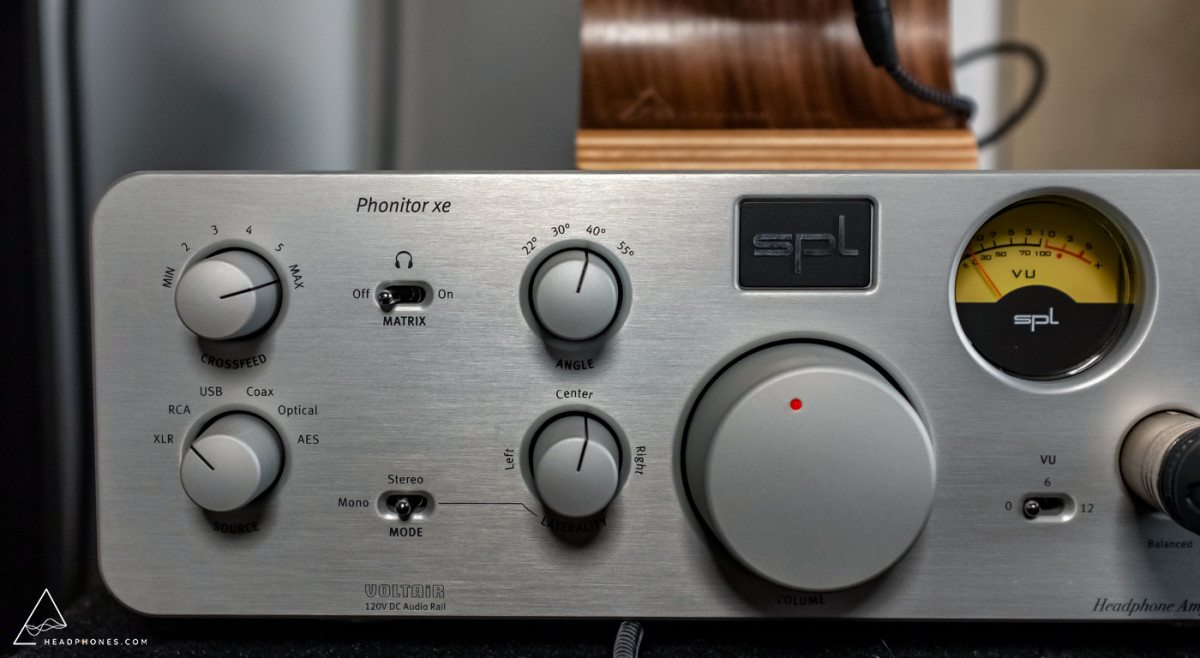
Laterality
There are three options for the “Laterality” switch on the Phonitor XE: Mono, Stereo, and Laterality. Mono is an incredibly useful feature in the studio - not so much for casual listening. Switching to Mono sums the left and right channels together so that a whole mix sounds like it’s coming from one center channel. This is a nice feature for music production to test how different stereo effects and panning choices will sound when the mix is collapsed to a mono source like a phone, laptop, bluetooth speaker etc. Summing a mix to mono is easy to achieve in the digital realm via software but having a physical button that’s always immediately accessible is awfully nifty.
IR Remote Control
From the manufacturer:
"The volume can be remote controlled with any infrared remote control, that the Phonitor xe simply learns."
I tested the IR Remote Learning feature for the purpose of this review and it worked just fine with both my integrated amplifier remote and my AC remote. I’m always listening/working within arms reach of the Phonitor so I don’t have any use for this feature personally but it’s a nice touch!
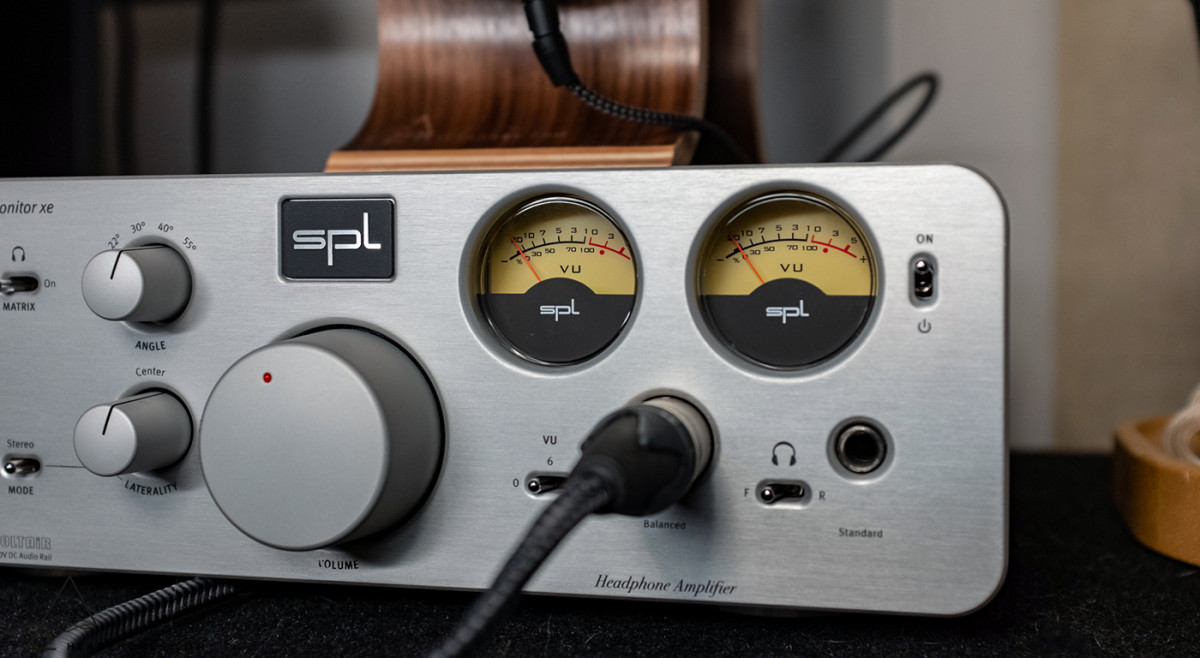
VU Meters
The VU meters are another feature that I don’t have any real need for in the studio or otherwise. However, they look fantastic! I do wish there was a more exhaustive way to calibrate the meters beyond setting them to either 0, 6, or 12. As soon as I’ve applied corrective headphone EQ with an appropriate level reduction to compensate, the level hitting the Phonitor’s VU meters is less than optimal to line up with the lowest setting. This is a real nitpick though as I’m not actually using the meters to make any critical decisions anyways.
Inputs and Outputs (front and rear)
The Phonitor XE has both single ended and balanced outputs on both the front and back of the unit which can be selected via a switch on the front of the amplifier. I love this feature in the studio because it makes it quick and easy to switch between different headphones without plugging/unplugging anything. It would be really great (listen up SPL) if each output had an independent volume control so that the listener didn’t have to adjust the volume when switching between front and rear outputs using different headphones with varying sensitivities.
VOLTAiR / 120 Volt Technology
The VOLTAiR explainer video on SPL’s YouTube channel claims the following about their VOLTAiR tech: more headroom, a bigger dynamic range, less distortion, less noise, no hearing fatigue, and the cleanest sound. To achieve this, SPL “developed proprietary operational amplifiers which operate on an unrivaled +/- 60 Volt.” Enter the “SPL SUPRA op-amp.” Allegedly, these op-amps which operate at “4x the voltage of standard audio electronics” enabled SPL to achieve all of the aforementioned benefits. Based on the way the SPL Phonitor XE sounds compared to all of the other amplifiers I’ve tested so far, I am inclined to believe the company’s claims. Speaking of sound...
Sound & Comparisons
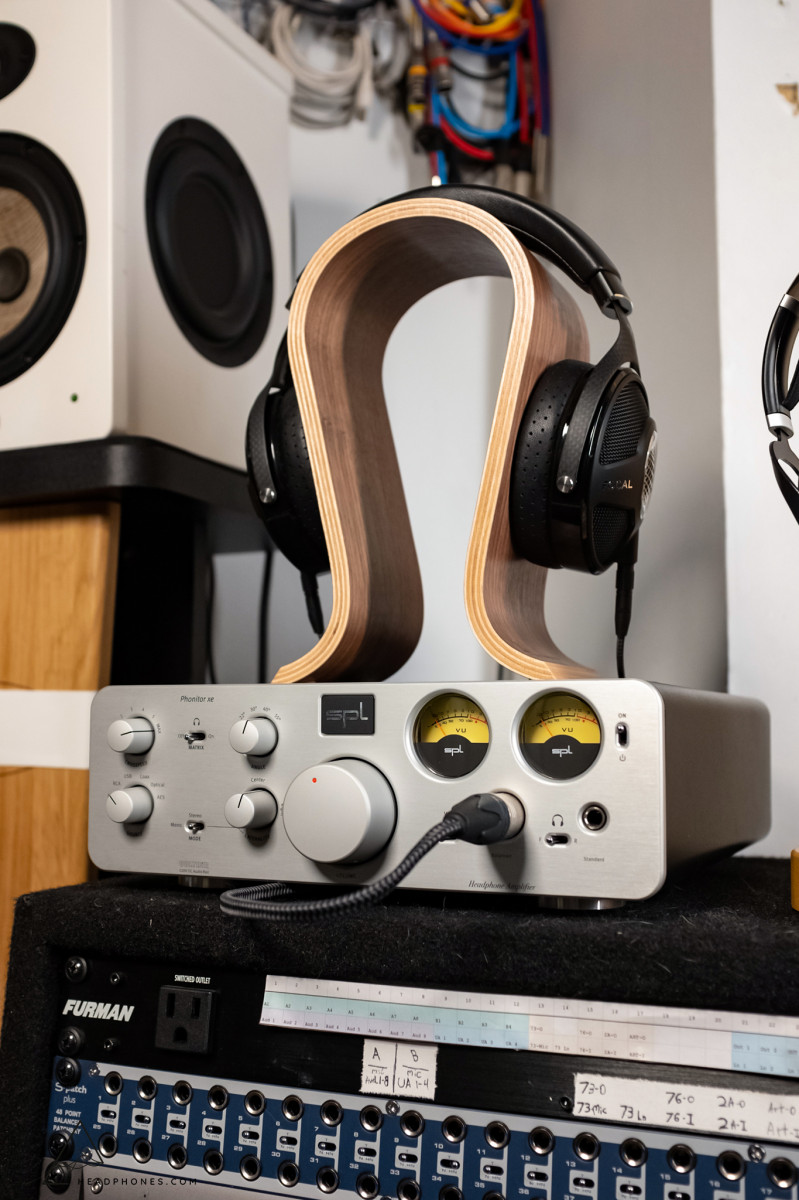
The Phonitor XE is simultaneously the smoothest, widest, and most dynamic headphone amplifier I’ve tested to date. I’ve been using a THX 789 for the last year or so as my main headphone amplifier in the studio. I was expecting the SPL to outclass the THX based on impressions I read on the Headphones.com forums, but I was not expecting such a significant difference in sound between two solid state amplifiers that both claim to be “perfectly neutral.” Compared to the XE, the 789 sounds narrow, cold, and unrefined. Listening to “Fall Into a Dream” by Foxwarren, the mix sounds significantly wider and deeper than it does on the 789. Listening to “Thirteen” by Louis Prince, the track’s percussive elements sound significantly smoother and more refined than they do on the 789 which sounds somewhat harsh in comparison.

Across the board, everything on my reference playlist sounds smoother, wider, and more refined on the Phonitor XE than it has on any other amp I’ve tested. That holds true with every headphone I used to test the amp including a Focal Utopia, Focal Clear, HiFiMan Sundara, and Sennheiser HD 6XX.
Entry Level vs Phonitor XE
The difference between the Schiit Heresy and the Phonitor XE is easily apparent switching between the two amps using a pair of Sennheiser HD 6XX. Listening to “The Number Thirteen,” by Louis Prince, the hi hat and snare pattern at the beginning sounds slightly harsh and loud on the Heresy. Switching to the Phonitor, the low end of the bass becomes more apparent and does an excellent job balancing out those drums and their high frequency energy. At 0:13, the reverb of the single-note bubbling synth on the left grows and envelopes the listener before retreating back to its original position. On the Heresy, this momentary envelopment sounds more contained and localized in front of the listener - between the listeners ears. On the Phonitor, the effect sounds more three dimensional with the reverb spreading in front, to the sides, and behind the listener - even on the 6XX which has a notoriously claustrophobic soundstage.
Switching to the Focal Clear, the difference between the Phonitor and the Heresy becomes more severe. The Phonitor outclasses the Heresy in every way with an elevated sense of texture and presence, better dynamics, deeper soundstage, wider soundstage, etc.
Burson’s Soloist 3X is an interesting comparison. The Soloist and the XE have more in common than the XE and the 789 in terms of space. But the Soloist has a markedly different (warmer) tonality. The Soloist does arguably more favors to poorly recorded/produced source material than the XE does with it’s (the Soloist’s) warmer tonality and softer high end. The Soloist actually sounds more like a tube amp than a typical solid state amp to my ears. That makes the Soloist less useful to me as a studio reference tool.
Rebel Audio’s RebelAmp is probably the most similar to the Phonitor XE of the amplifiers I’ve tested. The RebelAmp sounds like a Phonitor ‘Lite’ with a taste of the Phonitor’s smoothness and dynamics but to a lesser degree. The biggest difference between the two is the way that the RebelAmp sounds more rolled off in the high frequencies. At a fraction of the cost, the RebelAmp is a pretty attractive alternative if you don’t need a balanced connection - but the Phonitor easily takes the cake in terms of dynamics, tonality, spaciousness, and features.
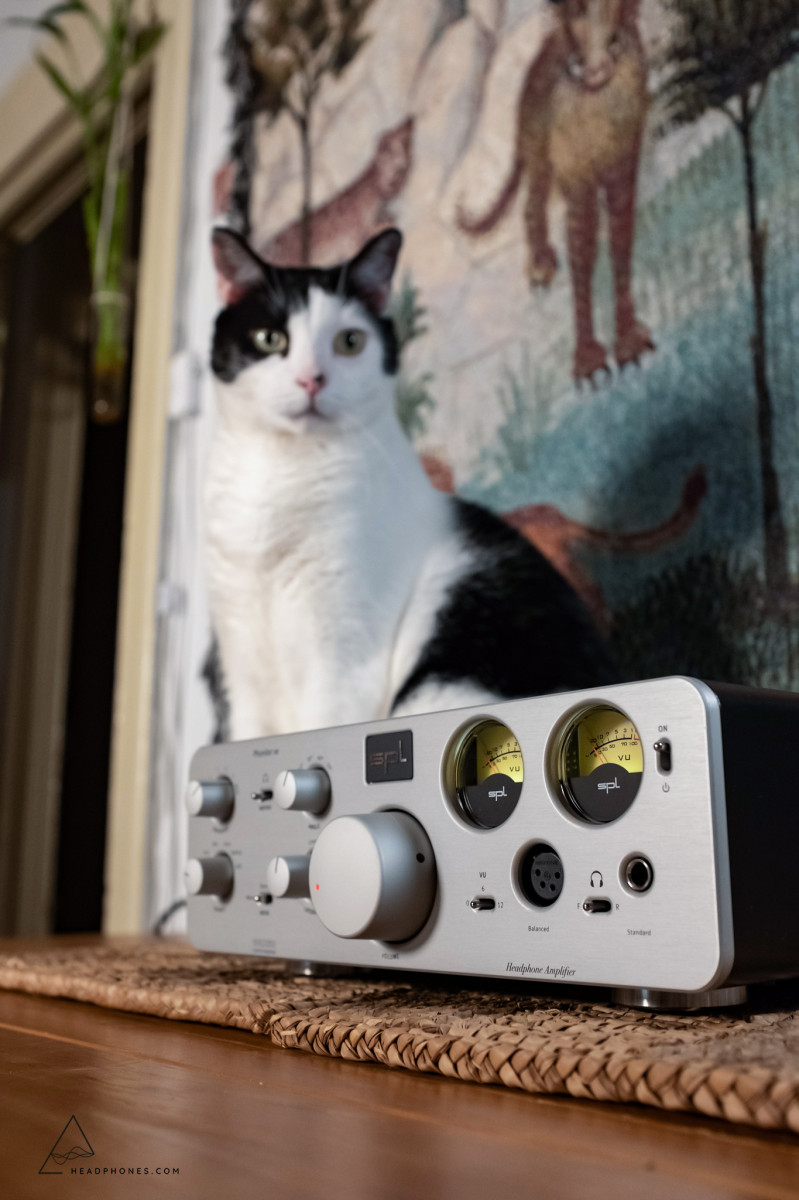
Conclusion
As someone who is far more concerned with sound quality than features, the Phonitor XE is superfluous to my needs, frustratingly so. I could live without the matrix, the laterality, the VU meters, and the extra outputs. That version of the Phonitor does exist, in theory, as the Phonitor E but I can’t comment on whether that amplifier actually sounds the same or not. What I can say is that the Phonitor XE I have here sounds better than any other amp I’ve tested to date. With that in mind, does the XE (over $2k) sound 20 times better than a Magni Heresy ($100)? Certainly not.
The SPL Phonitor XE is prohibitively expensive at its current price of $2,199. That’s money that, in my opinion, would be better spent on headphones. Or rent! But if you’re in the market for a solid state amplifier and you want the best of the best, the Phonitor XE should definitely be on your list. SPL’s website claims that the Phonitor XE is "the best headphone amplifier of our time" and there just might be some truth to that. The question is, what is “the best” worth to you?
Headphones used for testing:
Focal Utopia , Focal Clear , HiFiMan Sundara , Sennheiser HD 6XX , 64 Audio U12t
DAC used for testing:
SMSL SU-9 , Schiit Bitfrost 2 , Universal Audio X8
-Jake Cheriff
---
Buy the SPL Phonitor XE for the best available price.
